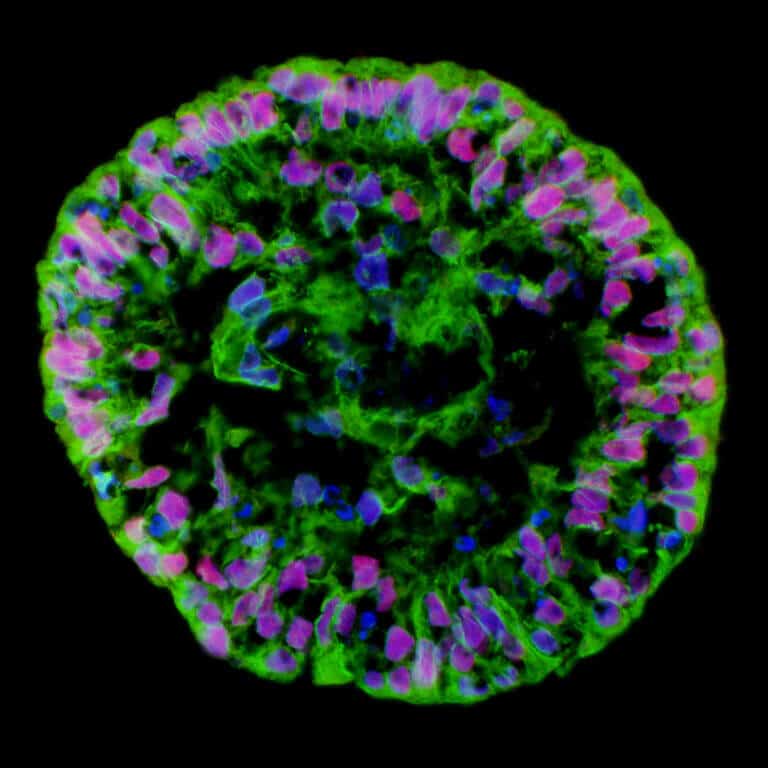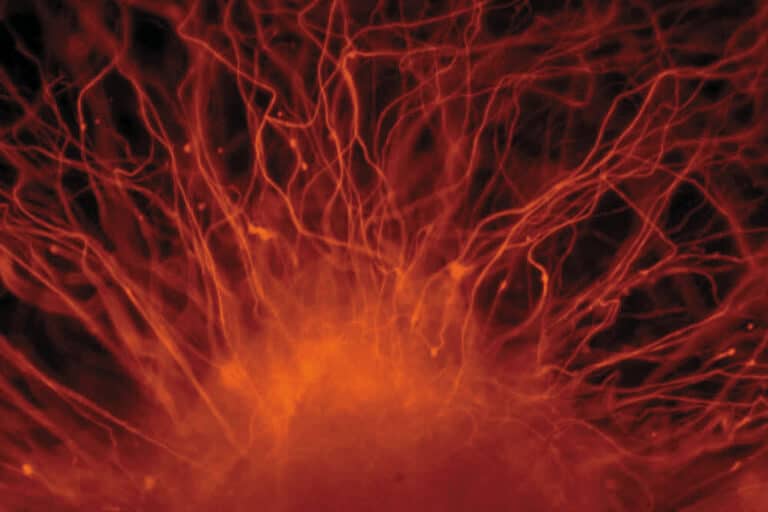Researchers discovered which genes are required for each stage of cell differentiation into neural stem cells and neurons, i.e. for brain development, and which of them are involved in diseases of the nervous system

Pluripotent stem cells are cells that can differentiate into any cell in the body (such as nerve cells, muscle, bone, skin, etc.), therefore they have the potential to regenerate and heal damaged tissues and organs. In regenerative medicine, scientists and doctors grow such cells, sort them in laboratory cultures - and implant them in patients. In addition, they can be used to model diseases and identify suitable drugs. For example, it is possible to create pluripotent cells from embryos and children who suffer from a genetic disease, grow them so that they differentiate into the necessary cells (eg brain cells), and scan these cells to find out which drugs can correct the defect in them.
What is the question? When do neurological genetic diseases, such as autism and microcephaly, begin to manifest in the fetus?
"Pluripotent stem cells are one of the most interesting fields in biology because they can be grown forever in culture in a laboratory and in a programmed way they can be sorted as in the development of an embryo, first into three germ layers and then into the 300-200 cell types in our body," explains Prof. Nissim Benvanisti, a genetics researcher, He holds the Herbert Cohen Chair in Cancer Research and directs the Azrieli Center for Stem Cells and Genetic Research at the Institute of Life Sciences at the Hebrew University of Jerusalem. Prof. Benvanisti's research deals with pluripotent stem cells, genetic diseases, tissue engineering, genetic and epigenetic defects and cancer research. Cut in a fetal body
Through the biomedical research on pluripotent stem cells, which has been taking place in Prof. Benvanisti's laboratory for about 25 years, it is possible to acquire a basic understanding of the initial development of a human embryo, to create models for diseases and find cures for them, to study cancer processes, and to identify the set of defects that can occur in the chromosomes of cells The pluripotent stem, during their differentiation, to ensure genetic integrity before transplanting them into patients.
Recently, as part of a study published in the journal Nature, Prof. Benvanisti and his team isolated for the first time haploid pluripotent stem cells (having a single copy for each gene). With the help of these cells, they created a library that makes it possible to study every gene that encodes (translates) a protein in the human body (about 18,000 genes). They created ten different mutations in each gene (using the genetic editing technology CRISPR), and thus also developed models for many genetic diseases. "It is easier to damage the genes that are in the haploid cells and find out what the result of the damage is. For example, we classified the genes related to cancer and showed how a mutation in them can lead to a tumor. In this way, we also identified the groups of genes that are required for the differentiation of the pluripotent stem cells into the different types of cells in the body, including neural stem cells, and this was the opening to the study of genetic diseases that develop in the central nervous system", explains Prof. Benvanisti.

The purpose of the current research by Prof. Benvanisti and his team, which won a grant from the National Science Foundation, is to understand which genes are involved in each stage of neural stem cell differentiation and when neural genetic diseases begin to manifest in the fetus. According to him, "to model a disease, you don't need mature cells. If it starts with embryonic cells, it should be studied from this stage. To understand what went wrong at the beginning of the journey." Nerve cells created in the lab
For the purpose of their research, the researchers isolate pluripotent haploid stem cells from an unfertilized egg and then they can be transformed into nerve cells using a cocktail of substances including vitamin A and nerve growth factor (a protein secreted from cells that causes the growth, differentiation and survival of nerve cells). They cause the cells to differentiate first into primary neural stem cells and then into neurons, glial cells (supporting cells of the nerve cells in the brain) and brain organoids (miniature versions of the brain). According to Prof. Benvanisti, "Through this research and the library we created, we began to find out which genes and proteins are needed for each stage of cell differentiation into neural stem cells and nerve cells, that is, for the development of the brain, and what is the embryonic stage in which neurogenetic diseases develop. For example, we have already identified which genetic defects (mutations) associated with autism and microcephaly are already expressed in neural stem cells, even before the creation of the nerve cells themselves. In addition, we showed that 20% of the diseases that affect the growth of the fetus begin already in the first week of pregnancy. Through these research methods and the use of fetal cells, we can examine when all the genetic-neural diseases begin to manifest and try to identify drugs that are suitable for the genetic defect that led to them." Human embryonic stem cells
The researchers also fused the haploid cells that contained mutations with normal haploid cells, thus obtaining for the first time a library of cells with two gene copies, one normal copy and one mutant, a condition that characterizes most cases of autism and other diseases. In the next step, they intend to sort the library into nerve cells and find out how the diseases manifest in them with the aim of finding cures for them in the future. In the past, researchers have already discovered suitable drugs for fragile X syndrome (which causes developmental intellectual disability and autism) through models they created for the disease and tested them in preclinical trials, and now they hope they will be tested in clinical trials.
Life itself:
Prof. Nissim Benvanisti, married + three children and three grandchildren, lives in Jerusalem. Family and work ("mainly with the wonderful team of students and researchers who work in my lab"), fill most of his time. The rest of the time he enjoys watching plays and opera in Israel and abroad with his wife.
More of the topic in Hayadan:
- Stem cells used as a basis for innovative medicine may contain cancerous mutations
- The mathematics of depression
- One morning we entered the laboratory and discovered that some of the cells had started beating together
- Cells with potential - a look at stem cells
- A method for identifying a stem cell with unlimited differentiation capacity
